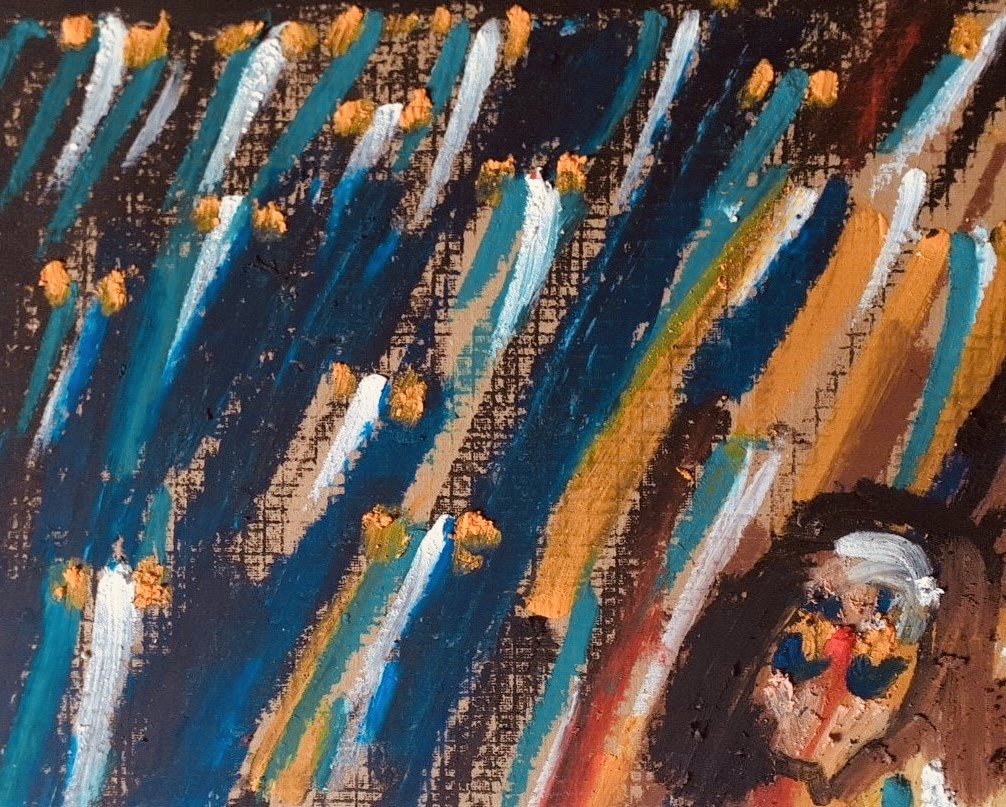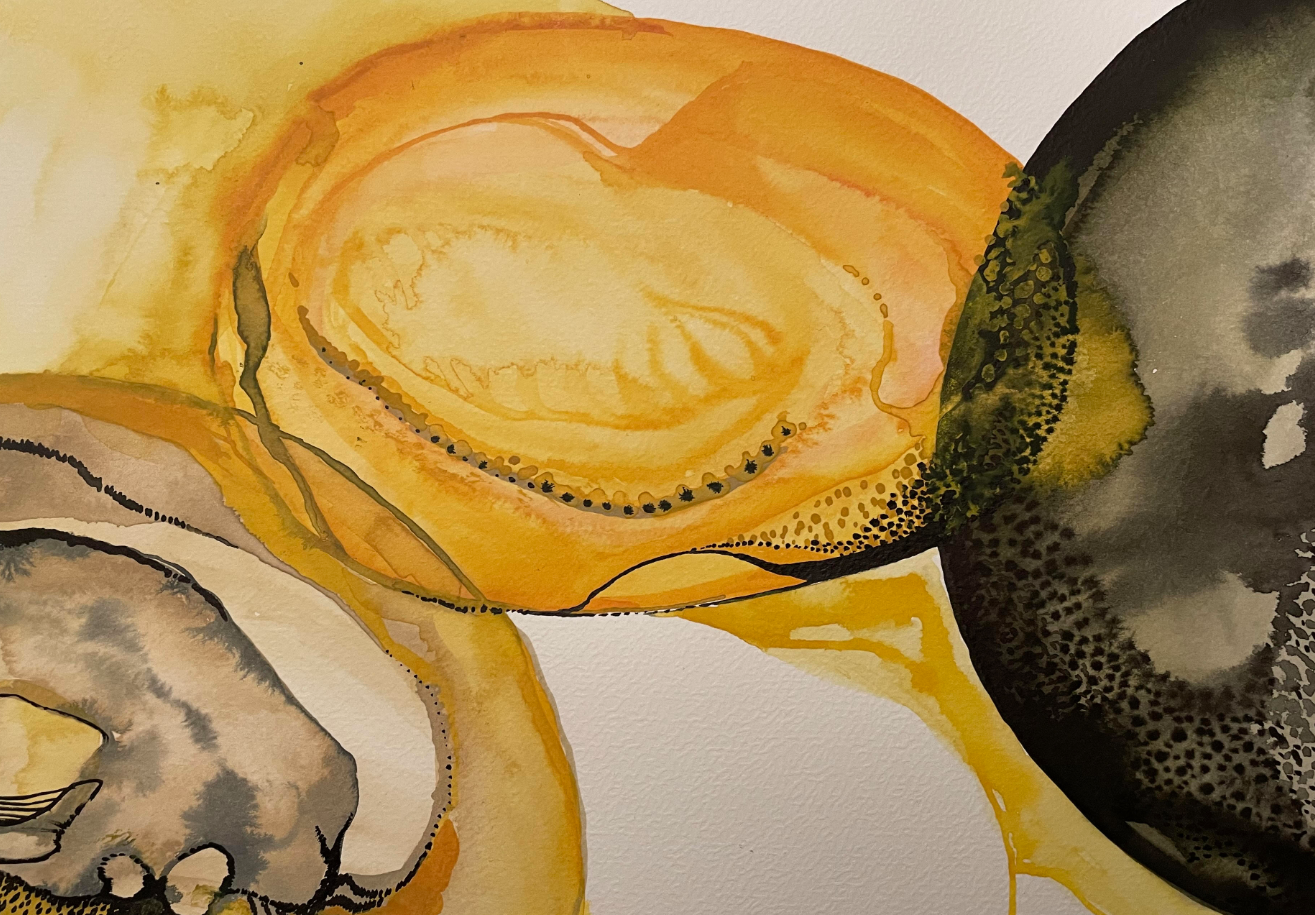Cadavers, vampires, states of emotional excitement precipitating crime, supernatural phenomena. Don’t they just bring a distinct kind of relief? Wouldn’t the world be a pleasant place, even a joyful one, if the only challenge standing in the way of our future was an otherworldly apparition? A phantom, or even a pack of phantoms, instead of global warming; Bluebeard’s castle instead of the destruction of the Ukrainian people and their culture; great-grandmother’s ghost in place of viruses spinning off into a world pandemic.
Could the Gothic teach us a lesson: whenever people become fixed in their ways or even stubbornly wish to remain uneducated, their stance sets in motion a particular mechanism. Whatever they repress and reject, out of inability or unwillingness to digest or embrace, eventually returns with untamable force or in an unforeseen shape to haunt them. Consequently, the choice to remain ignorant or illiterate is never a private matter. As Piotr Sobolczyk, whose essay on Pol Got is making its debut here, writes in his book on Gothicism,
The Gothic convention holds that every person, and even more – every family has some “secrets,” obviously “dark.” Therefore, the Freudian category of the uncanny, the Unheimliche, which carries the image of “home” and the “uncanny” (“strange”) invading it, or of the “return of the repressed,” is so eagerly used in interpretations of Gothicism – some scholars of Gothicism even consider the category of the uncanny itself, also in pre-Freudian approaches, to be a product of Gothic thinking (11).

M. Cendrowska
Polish Gothic, as an idea for a title to match a yet nonexistent literary magazine – initially destined to present some of the student-penned original work spawned from our creative writing classes in our American Studies and Management of Artistic Institutions programs – flashed across the firmament one night in late October 2021. This was a time when for me personally some ongoing events, immediate and yet preternatural, were becoming impossible to process intellectually or emotionally embrace; namely, the migrants – exhausted, dehydrated and disoriented, stranded in the depths of the woods and marshes by the Polish-Belarusian border – clashed against my comfortable stay in Budapest at, nomen omen, Alkotmány utca. But perhaps another time will be more appropriate to recount these labyrinthine circumstances, once Polish Gothic matures into its present tense, thus deserving to have a history.
It then may suffice to say for now that the magazine’s title has its roots in Sobolczyk’s book on Gothicism as much as in Małgorzata Drohomirecka’s cycle of paintings Polonia_2020 – the centerpiece of which we are proud to present in our June 2022 debut issue. “Polonia at the Altar,” as a paraphrase of Jan Matejko’s famous painting of 1864, features a mournful young woman appropriately named Polonia (another uprising, the last one in a string of nineteenth-century insurgencies, has just collapsed and there is little hope of mobilizing another such effort, as there is simply no one left to fight) accompanied by the painter, his outline lifted from his self-portrait, and planted right in the middle of his radically altered masterpiece. These figures, these holograms appear to hover, suspended against the background of David Lynch’s Red Room (from Twin Peaks) as if in a spiritualist séance. This cultural mishmash, the blending of traditional associations with contemporary references, accompanied by some occasional weaving of high and low, is just the poetics we hope to make the staple of this and future presentations.
The upcoming issues of PolGot will not be numbered but, instead, linked to seasons: Summer, Autumn, Winter, and Spring. The magazine should be like a river winding its way in the dark enticingly enough to draw us along with its flow. Or at least to dip our toes in it, as more and more stories along with artwork keep arriving in batches, like salvaged cargo.
And so in this first batch, we have Małgorzata Harasimowicz’s sketch from the wild days of educational adventure. “Almost Us” is about violence that lurks in the cracks, sliding as it does between intimate pillow talk and then veering off from this into an easily relatable account about meeting new Ukrainian and Russian friends at a summer school. A bit of “what happened to our class,” and yet in light of the Russian invasion of Ukraine, whatever had been preserved in memory as charming, if a bit odd or ill-adjusted, become the subject of narrative resizing (now at last we know what this or that meant), as we reflect on some previously recognized truths which now have acquired new distressing dimensions.
Embracing the victims’ point of view may prompt us to wonder how perpetrators of violence deal with intimacy; looking back, do they consider an outburst of violence just a minor episode? Do they envision themselves acting “in the name of,” in self-defense, or out of an unflinching desire to save other people’s souls like a latter-day embodiment of vengeance in “Almighty” by Bartosz Grauman? Do they continue rambling ominously on once they are done with whatever they did? Most likely, they put a lid on it, which is what Zuzanna Czubacka’s piece “Insomnia” presents step by step, as the unnamed narrator tormented by his sleeplessness first finds himself ambushed by intimacy and then, disastrously, acts on this belief; this short-short story is in dialogue with E.A. Poe; it also links in with the latest statistics on feminicide.
What turns a person into a religious terrorist and suicide bomber is a mystery; what turns a person into perpetrator of domestic violence is commonality. A common denominator may be the word “love” (from the opening paragraph of Grauman’s story). Or might an inferiority complex offer a glimpse into the initial motivation, but then—many people suffer from inferiority complex and manage to live with these. All we see is that at the moment of extreme tension all doors to such a personality are shut.
For those who can still sleep at night, it all begins with Sigmund Freud; before Freud, dreams, depending on which religion or school of thought or poetic affiliation one embraced, would be regarded as portent of terrible or beneficial events; or else, dreams were considered an annoyance to be dispersed with a prayer. With the publication of Freud’s essays, first on dreams (1899) and on the uncanny (1919), dreams begin to be regarded as the keyholders to our elusive inner selves.

Zuzanna Szmyt-Nowakowska
Gothic narratives unravel in the thinly veiled liminal borders between the land of dreams and the area that we consider mundane. The idea is then that something first must seem familiar to us; only then can it become a little warped. “In Gothicism,” Sobolczyk writes, “the characters behave seemingly ‘realistically,’ ‘typically,’ while the ‘uncanny’ comes from outside; it is ‘undomestic’ (129).” But then what happens if we become so accustomed to the unusual that no horror or drama can either shake or shock us? Such mis-en-scène we encounter in Adrian Trojak’s “Covid-51.” One could argue that our present political and social situation is Gothic in essence. After all, wars and epidemics have for centuries been the greatest calamities that could affect a society. Our personal boundaries, regarding what we consider familiar and unfamiliar, have been brutally shaken in the last couple of years. As a result, if we were told to submit to another lockdown, we would comply, some of us perhaps with a relief – we already know the drill. And while the hospitals of the pandemic time should be remembered as veritable battlefields, now we, helpless recipients of the news, are hit with more stories of atrocities arriving in waves, reaching us from the battlefields of Ukraine. No longer can these be swiped aside as hearsay (as was the case in the previous two world wars); pictorial evidence, photographs from war crime scenes are readily available if only we can stomach looking at them. All other battles, like the one presented in “IUP” by Michał Michalak fade into insignificance, unjustly.
From our first responses to war in March 2022, disbelief (“how is it possible that in the twenty-first century” etc.) has been already replaced by a jaded awareness of the daily human loss and our own weary helplessness. Some of us seem permanently stuck in the state that Agnieszka Grzegowska describes as “The Haze.” Others no longer believe that any safe haven awaits us, except what Sandra Jakubowska presents as being stuck in a state “between being alive and being dead.” Yet others concede that this may be the only haven we deserve for our practiced politics of avoidance when faced with a pressing matter be it global warming through to hate speech.
In this vein, Bartosz Bem’s “Disbeliever” features an ingénue narrator who refuses to listen to other people’s words of caution and disregards all warning signs. He is bound to end up in the proverbial frying pan; we the readers know it, can predict it, and yet for whatever reason still we find it thrilling. The real mystery is why would anyone want to spend time and money on a sightseeing tour of haunted houses only to sustain his disbelief in supernatural phenomena. While other narrators take pleasure in leading us astray: such is the case with “Stockholm,” Dominika Kotarbinska’s short story, which preys on our deep fear of the other, of foreigners, and exposes the readers’ eagerness to relish the news about the terrible plight of tarnished innocence only to reveal itself to be about something else altogether.
The time has come to disclose that in Polish Gothic we won’t be spending much time discussing supernatural phenomena. As Sobolczyk writes, “whenever the ‘uncanny’ is to come out as ‘uncovered’; that is, no longer held behind a mask or veil, it usually turns out to be hybrid or monstrous” (18). Consequently, the premise is rather that we, as humanity, are the monstrous presence on the planet, which is what Marta Kot’s personal essay “Nighcrawler” conveys: a school can become your personal haunted house, however unwelcome that is. If school bullying remains unchecked, who needs zombies? From all this, what should now have become obvious is that even in the most Gothic of Gothic stories, behind the carefully choreographed decorum lurks an actual violence of our own daily making. Yet, despite the unrelenting flow of horror narratives unraveling around the globe, we retain an appetite for the uncanny.
Works Cited:
Freud, S. “The Uncanny.” On Creativity and the Unconscious, ed. B. Nelson, New York
Sobolczyk, P. Gotycyzm – modernistyczny sobowtór odmieńca. Słowo / obraz terytoria 2017.
IMorska, “For thee, thou need’st no such deceit, For thou thyself art thine own bait.” Model: Marion C.


